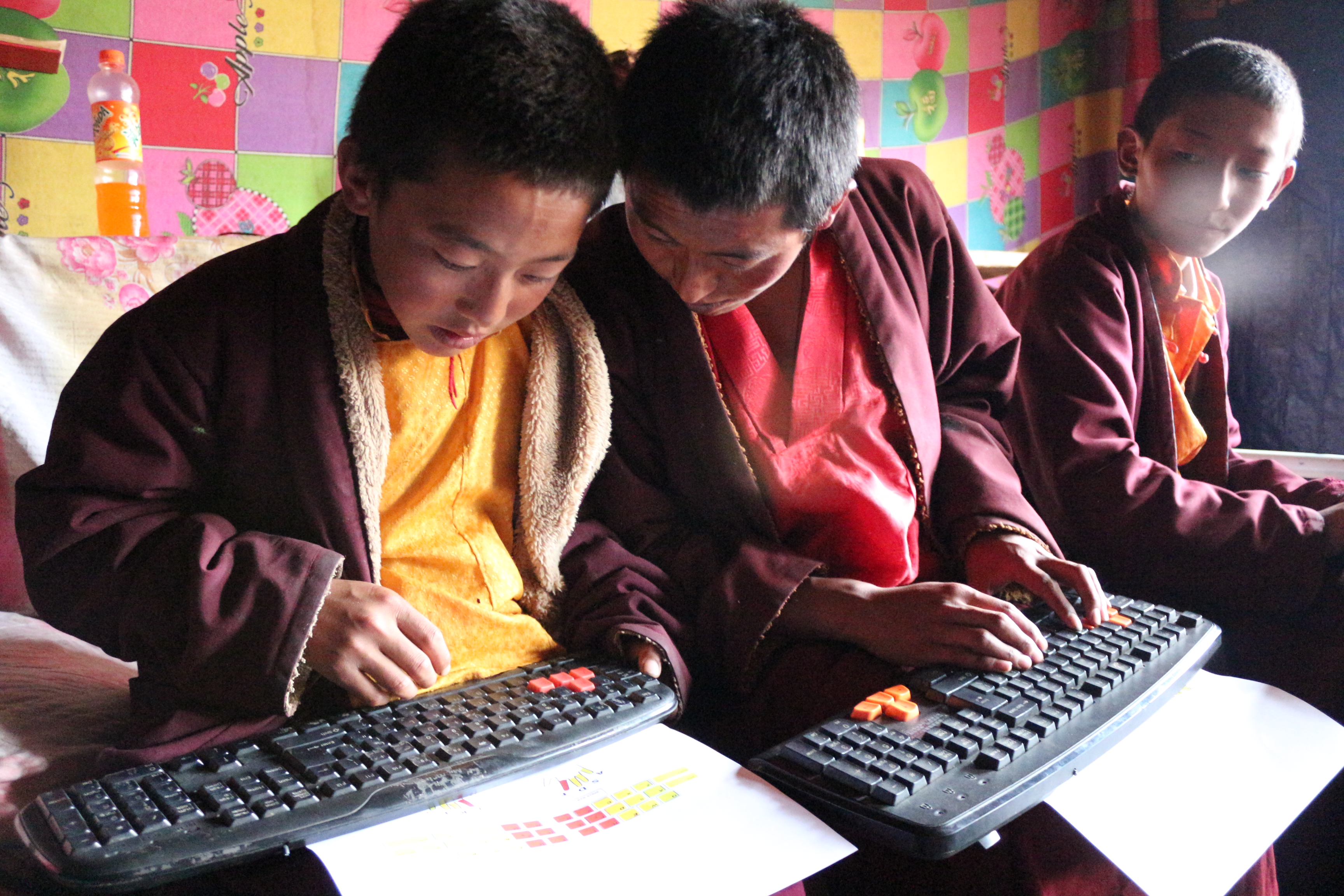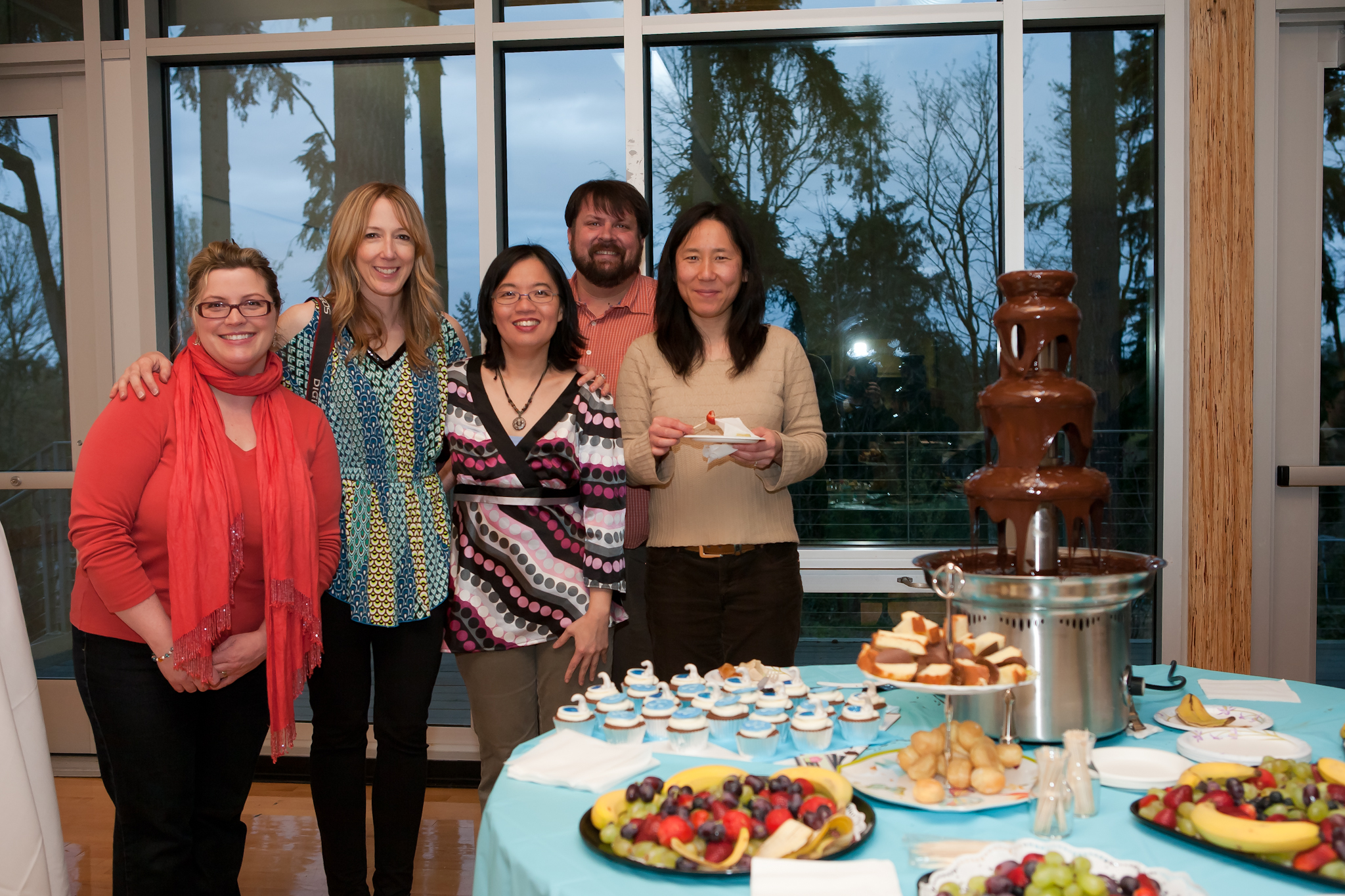Seattle’s Education at Elevation celebrates first 56 Tibetan graduates from school
Seattle’s Education at Elevation Celebrates First 56 Tibetan Graduates from School
Author Michele Thomson, published on November 2013
The trip to an Oct. 18 graduation party took Wendy Wong, founder of Education at Elevation, 18 hours by plane and three days by car. For the last five hours she was driven over rugged terrain, and on treacherous mountain roads.
This trip was an extra-special one, and worth the long journey. Wong went there to visit the first class to graduate from the Nga Gyur Shed Dup Choe Ling School, in the western region of Sichuan, China. Fifty six students, ages 12-25, graduated on that day.
“It was a relief to finally arrive at the school safely and to see the smiling faces of the students, “said Wong, who departed for her journey on Oct. 9, and didn’t return until Oct. 23.
Graduation day was a very proud day for the students, teachers, and villagers. When the students first came to the school when it opened five years ago, they were illiterate. Now, they can read and write Tibetan and Mandarin, and are proficient in basic mathematics.
The students, grateful for their education, thanked the donors. Penjok, a 24-year-old student, said, “Thank you very much to those who helped us. I would not forget your kindness for the rest of my life.”
Of the 56 graduates, most went on to continue their studies at monasteries, nine returned home to their families, five students left to work in a factory in Shenzhen, and one went to study computers in Chengdu.
School founder Sonam Rinpoche, a Nyingma lama, also traveled to congratulate the graduating students and to give special blessings. The day was full of speeches from the village leaders and teachers, and dancing by the students. Everyone shared a great feast of yak, pork and vegetables served over rice.
The success of the school is at least in part due to Wong, who in 2007 founded Education at Elevation, also called (E@E). The Seattle-based non-profit raises money to support the school, which is intended for underprivileged Tibetan children and young adults.
Learning to operate a keyboard is an important skill for the students.
It had been over three years since her last visit to the remote school site, which is in what is traditionally referred to as Kham, Tibet. The Kham area covers a portion of the Tibetan Autonomous Region, and spreads into Sichuan.
The school, Nga Gyur Shed Dup Choe Ling, (loosely translated The Sanctuary for the Study and Practice of the Dharma of the Early Translation), was founded by a high-ranking Tibetan lama, Tulku Sonam Rinpoche. Rinpoche grew up in the Kham area and vowed to help underprivileged children.
“Children have no education, no guidance and life is hard for them. We want to work together to stop the suffering for them and help to give them a better life,” he said. “My hope is that through education, children can have a better life and the next generations can have a better life too.”
Rinpoche worked tirelessly planning the school, and the monastery nearby. Many of the students come to the school as orphans or from one-parent families, and so the school provides much more than an education center. It is also a haven for the children, where they can live and study in a safe home environment.
Each morning they rise to the sound of a gong echoing through the mountains. They head to class early to chant Buddhist prayers for the first hour, including a special blessing to the donors and supporters of the school. After several hours of lessons they break for lunch, study some more, break for dinner and then have evening lessons.
While the school is now fully functioning, much still remains to be done. The most urgent current project is to create a sustainable water system, to provide the school and village with clean water all year long.
There is a water source near the school but it freezes during the winter, and the children have to spend many hours fetching water from the nearby stream.
All of the students enrolled in the school are children of nomads and otherwise have very little opportunity for education. Nomadic families live in high alpine communities and survive by living off the land just like the generations before them. They herd yak which provides sustenance for them: milk, yogurt, and cheese. They also use dried yak dung as fuel to heat their stoves to cook and to keep them warm.
Nomads live in tents made of course yak hair that has been woven together to form their transportable home. Each tent is only about 200 square feet, and many family members live together.
It’s a hard life. The nomads own few possessions and work from sunup to sundown with the children right beside them. Often families rely on the help of their children to survive and if there is an opportunity to education, it’s put on hold because the children are needed to help out with daily chores.
But many families see the great value in education and encourage their children to go to school when it’s possible. Luckily, education became a reality for the children of the Anzi village.
The students had little or no education before arriving at the school and the ages of first-year students ranged from 6 to 18. Today, all the students can read and write in the Tibetan language which, according to Sonam Rinpoche, is a great feat that can be compared to climbing Mount Everest.
The school looks small and almost insignificant compared to the vast mountain range that surrounds it. But inside the colorfully painted walls, the children sit packed side-by-side with quiet intention of learning their lessons: Tibetan, Mandarin and mathematics.
There is limited power at the school and dorm rooms. Solar panels dot the rooftops – some working, others in disrepair, and provide limited power that illuminates each room.
Education at Elevation raises funds to continually provide the students with food, clothing, shoes, blankets, stoves, school supplies and teacher salaries. Four teachers instruct the boys, and a fifth teaches the girls.
Although there are many competent teachers in this area, it is often difficult to entice them to live and work at the school because of the austere living conditions and bitter cold winters.
Teachers and students live together in quarters similar to dorm rooms, where several students share a room. Each room is equipped with a stove that serves as kitchen and heat source. Students and teachers sleep on thin sleeping mats and Tibetan rugs. Colorful posters and fabrics cover their walls, while books and a few personal items are scattered about their rooms.
Currently, there are fewer than 10 girls studying at the school, in a separate classroom and dorm area built for the girls in 2010.
Enrollment of female students has been low, mostly because of cultural stereotypes that boys should be educated and girls should stay at home to help the family. Teachers at the school are encouraging the community members to send girls to school, and hope that female enrollment will increase soon.
Education at Elevation (E@E) is a non-profit is committed to improving the lives of Tibetan orphans, poor children and elders living in rural Eastern Tibet. Our vision is to bring hope to the children through education, emotional and spiritual support that will provide them with tools for a brighter future.
Education at Elevation raises funds to purchase food, clothing and school supplies for the students, and sleeping mats for children and teachers.
People can support the organization by buying infinity scarves, oolong tea, tote bags and cookies during our winter gift and cookie sale through our website. We also coordinate a spring auction, and people can donate through the website, anytime.
Author: Michele Thomson
Michele Thomson has been an active board member of Education of Elevation for the last four years, assisting with marketing and events. Thomson met Education at Elevation founder Wendy Wong in 2009, and traveled to the school a year later to visit the students. Thomson lives in Hood River, Ore., with her husband.




